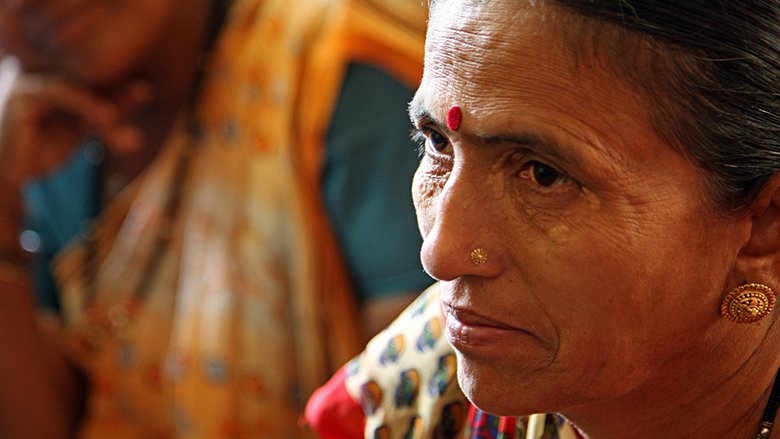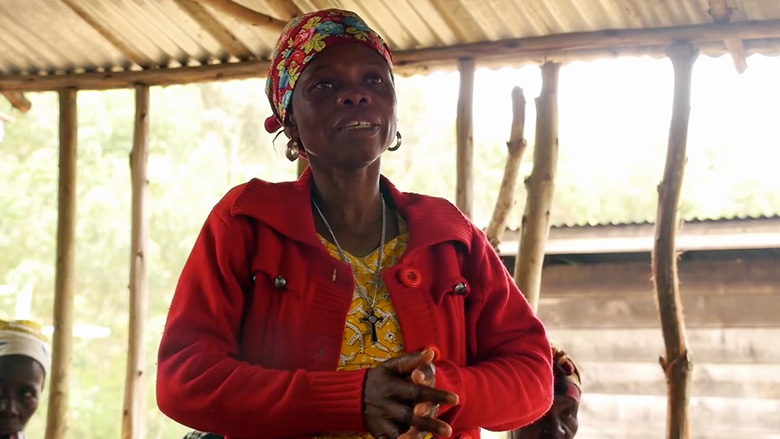Gender-based violence (GBV) or violence against women and girls (VAWG), is a global pandemic that affects 1 in 3 women in their lifetime.
The numbers are staggering:
- 35% of women worldwide have experienced either physical and/or sexual intimate partner violence or non-partner sexual violence.
- Globally, 7% of women have been sexually assaulted by someone other than a partner.
- Globally, as many as 38% of murders of women are committed by an intimate partner.
- 200 million women have experienced female genital mutilation/cutting.
This issue is not only devastating for survivors of violence and their families, but also entails significant social and economic costs. In some countries, violence against women is estimated to cost countries up to 3.7% of their GDP – more than double what most governments spend on education.
Failure to address this issue also entails a significant cost for the future. Numerous studies have shown that children growing up with violence are more likely to become survivors themselves or perpetrators of violence in the future.
One characteristic of gender-based violence is that it knows no social or economic boundaries and affects women and girls of all socio-economic backgrounds: this issue needs to be addressed in both developing and developed countries.
Decreasing violence against women and girls requires a community-based, multi-pronged approach, and sustained engagement with multiple stakeholders. The most effective initiatives address underlying risk factors for violence, including social norms regarding gender roles and the acceptability of violence.
STRATEGY
The World Bank is committed to addressing gender-based violence through investment, research and learning, and collaboration with stakeholders around the world.
Since 2003, the World Bank has engaged with countries and partners to support projects and knowledge products aimed at preventing and addressing GBV. The Bank supports over $300 million in development projects aimed at addressing GBV in World Bank Group (WBG)-financed operations, both through standalone projects and through the integration of GBV components in sector-specific projects in areas such as transport, education, social protection, and forced displacement. Recognizing the significance of the challenge, addressing GBV in operations has been highlighted as a World Bank priority, with key commitments articulated under both IDA 17 and 18, as well as within the World Bank Group Gender Strategy.
The World Bank conducts analytical work—including rigorous impact evaluation—with partners on gender-based violence to generate lessons on effective prevention and response interventions at the community and national levels.
The World Bank regularly convenes a wide range of development stakeholders to share knowledge and build evidence on what works to address violence against women and girls.
Over the last few years, the World Bank has ramped up its efforts to address more effectively GBV risks in its operations, including learning from other institutions.
Addressing GBV is a significant, long-term development challenge. Recognizing the scale of the challenge, the World Bank’s operational and analytical work has expanded substantially in recent years. The Bank’s engagement is building on global partnerships, learning, and best practices to test and advance effective approaches both to prevent GBV—including interventions to address the social norms and behaviors that underpin violence—and to scale up and improve response when violence occurs.
World Bank-supported initiatives are important steps on a rapidly evolving journey to bring successful interventions to scale, build government and local capacity, and to contribute to the knowledge base of what works and what doesn’t through continuous monitoring and evaluation.
RESULTS
Addressing the complex development challenge of gender-based violence requires significant learning and knowledge sharing through partnerships and long-term programs. The World Bank is committed to working with countries and partners to prevent and address GBV in its projects.
Knowledge sharing and learning
Violence against Women and Girls: Lessons from South Asia is the first report of its kind to gather all available data and information on GBV in the region. In partnership with research institutions and other development organizations, the World Bank has also compiled a comprehensive review of the global evidence for effective interventions to prevent or reduce violence against women and girls. These lessons are now informing our work in several sectors, and are captured in sector-specific resources in the VAWG Resource Guide: www.vawgresourceguide.org.
The World Bank’s Global Platform on Addressing GBV in Fragile and Conflict-Affected Settings facilitated South-South knowledge sharing through workshops and yearly learning tours, building evidence on what works to prevent GBV, and providing quality services to women, men, and child survivors. The Platform included a $13 million cross-regional and cross-practice initiative, establishing pilot projects in the Democratic Republic of Congo (DRC), Nepal, Papua New Guinea, and Georgia, focused on GBV prevention and mitigation, as well as knowledge and learning activities.
The World Bank regularly convenes a wide range of development stakeholders to address violence against women and girls. For example, former WBG President Jim Yong Kim committed to an annual Development Marketplace competition, together with the Sexual Violence Research Initiative (SVRI), to encourage researchers from around the world to build the evidence base of what works to prevent GBV. In April 2019, the World Bank awarded $1.1 million to 11 research teams from nine countries as a result of the fourth annual competition.
Addressing GBV in World Bank Group-financed operations
The World Bank supports both standalone GBV operations, as well as the integration of GBV interventions into development projects across key sectors.
Standalone GBV operations include:
- In August 2018, the World Bank committed $100 million to help prevent GBV in the DRC. The Gender-Based Violence Prevention and Response Project will reach 795,000 direct beneficiaries over the course of four years. The project will provide help to survivors of GBV, and aim to shift social norms by promoting gender equality and behavioral change through strong partnerships with civil society organizations.
- In the Great Lakes Emergency Sexual and Gender Based Violence & Women's Health Project, the World Bank approved $107 million in financial grants to Burundi, the DRC, and Rwanda to provide integrated health and counseling services, legal aid, and economic opportunities to survivors of – or those affected by – sexual and gender-based violence. In DRC alone, 40,000 people, including 29,000 women, have received these services and support.
- The World Bank is also piloting innovative uses of social media to change behaviors. For example, in the South Asia region, the pilot program WEvolve used social media to empower young women and men to challenge and break through prevailing norms that underpin gender violence.
Learning from the Uganda Transport Sector Development Project and following the Global GBV Task Force’s recommendations, the World Bank has developed and launched a rigorous approach to addressing GBV risks in infrastructure operations:
- Guided by the GBV Good Practice Note launched in October 2018, the Bank is applying new standards in GBV risk identification, mitigation and response to all new operations in sustainable development and infrastructure sectors.
- These standards are also being integrated into active operations; GBV risk management approaches are being applied to a selection of operations identified high risk in fiscal year (FY) 2019.
- In the East Asia and Pacific region, GBV prevention and response interventions – including a code of conduct on sexual exploitation and abuse – are embedded within the Vanuatu Aviation Investment Project.
- The Liberia Southeastern Corridor Road Asset Management Project, where sexual exploitation and abuse (SEA) awareness will be raised, among other strategies, as part of a pilot project to employ women in the use of heavy machinery.
- The Bolivia Santa Cruz Road Corridor Project uses a three-pronged approach to address potential GBV, including a Code of Conduct for their workers; a Grievance Redress Mechanism (GRM) that includes a specific mandate to address any kinds gender-based violence; and concrete measures to empower women and to bolster their economic resilience by helping them learn new skills, improve the production and commercialization of traditional arts and crafts, and access more investment opportunities.
- The Mozambique Integrated Feeder Road Development Project identified SEA as a substantial risk during project preparation and takes a preemptive approach: a Code of Conduct; support to – and guidance for – the survivors in case any instances of SEA were to occur within the context of the project – establishing a “survivor-centered approach” that creates multiple entry points for anyone experiencing SEA to seek the help they need; and these measures are taken in close coordination with local community organizations, and an international NGO Jhpiego, which has extensive experience working in Mozambique.
Strengthening institutional efforts to address GBV
In October 2016, the World Bank launched the Global Gender-Based Violence Task Force to strengthen the institution’s efforts to prevent and respond to risks of GBV, and particularly sexual exploitation and abuse (SEA) that may arise in World Bank-supported projects. It builds on existing work by the World Bank and other actors to tackle violence against women and girls through strengthened approaches to identifying and assessing key risks, and developing key mitigations measures to prevent and respond to sexual exploitation and abuse and other forms of GBV.
In line with its commitments under IDA 18, the World Bank developed an Action Plan for Implementation of the Task Force’s recommendations, consolidating key actions across institutional priorities linked to enhancing social risk management, strengthening operational systems to enhance accountability, and building staff and client capacity to address risks of GBV through training and guidance materials.
As part of implementation of the GBV Task Force recommendations, the World Bank has developed a GBV risk assessment tool and rigorous methodology to assess contextual and project-related risks. The tool is used by any project containing civil works.
The World Bank has developed a Good Practice Note (GPN) with recommendations to assist staff in identifying risks of GBV, particularly sexual exploitation and abuse and sexual harassment that can emerge in investment projects with major civil works contracts. Building on World Bank experience and good international industry practices, the note also advises staff on how to best manage such risks. A similar toolkit and resource note for Borrowers is under development, and the Bank is in the process of adapting the GPN for key sectors in human development.
The GPN provides good practice for staff on addressing GBV risks and impacts in the context of the Environmental and Social Framework (ESF) launched on October 1, 2018, including the following ESF standards, as well as the safeguards policies that pre-date the ESF:
- ESS 1: Assessment and Management of Environmental and Social Risks and Impacts;
- ESS 2: Labor and Working Conditions;
- ESS 4: Community Health and Safety; and
- ESS 10: Stakeholder Engagement and Information Disclosure.
In addition to the Good Practice Note and GBV Risk Assessment Screening Tool, which enable improved GBV risk identification and management, the Bank has made important changes in its operational processes, including the integration of SEA/GBV provisions into its safeguard and procurement requirements as part of evolving Environmental, Social, Health and Safety (ESHS) standards, elaboration of GBV reporting and response measures in the Environmental and Social Incident Reporting Tool, and development of guidance on addressing GBV cases in our grievance redress mechanisms.
In line with recommendations by the Task Force to disseminate lessons learned from past projects, and to sensitize staff on the importance of addressing risks of GBV and SEA, the World Bank has developed of trainings for Bank staff to raise awareness of GBV risks and to familiarize staff with new GBV measures and requirements. These trainings are further complemented by ongoing learning events and intensive sessions of GBV risk management.
Last Updated: Sep 25, 2019


